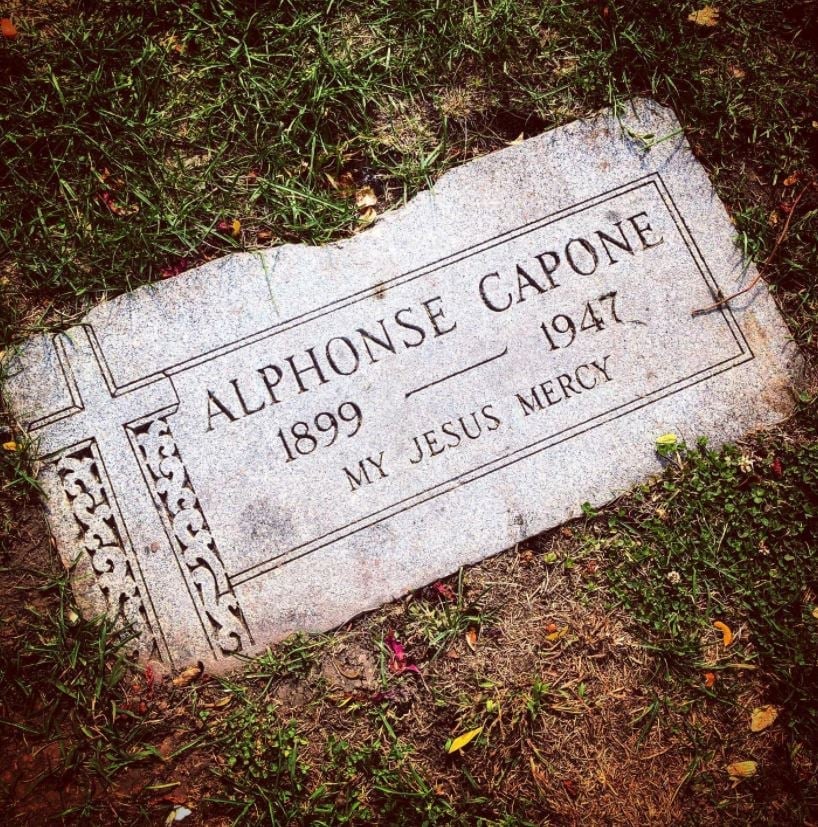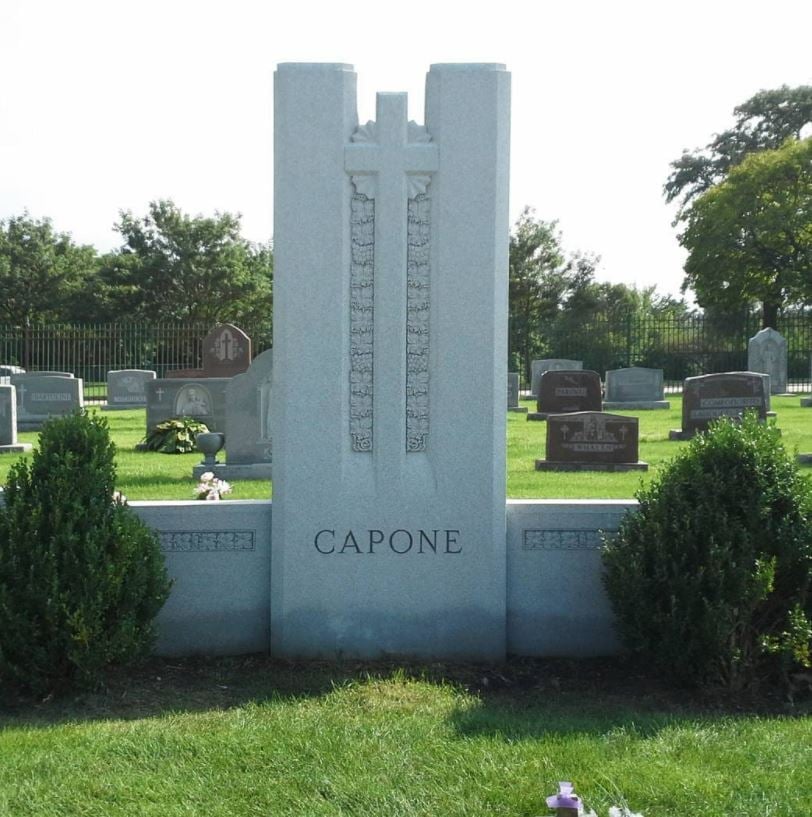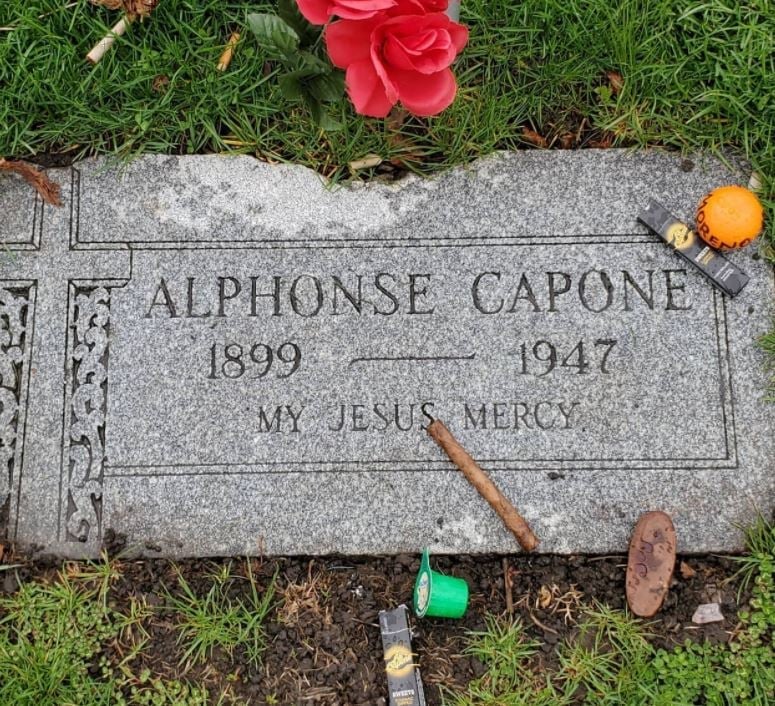Where is Al Capone Buried, And How Can You Visit His Gravesite?
Al Capone, a name synonymous with the dark underbelly of American history, evokes images of prohibition-era speakeasies and notorious gangland violence. Renowned as "Public Enemy No. 1" during his reign as a mob boss in Chicago, Capone's legacy continues to intrigue and fascinate. Yet, amidst the tales of bootlegging and racketeering lies a lingering mystery: where exactly is Al Capone buried?
As we delve into the enigma surrounding the final resting place of the Chicago gangster, it becomes clear that understanding the historical significance of his burial site is essential for grasping the full scope of Capone's impact on American culture and society. Join us on a journey to unravel the secrets of Al Capone's grave and discover how you can visit the tombstone of one of America's most infamous figures.



Al Capone: A Brief History
Al Capone's journey from humble beginnings to becoming one of the most notorious mafia figures in American history is a tale of ambition, power, and, ultimately, downfall.
Early Life and Rise to Power in Organized Crime
Born in 1899 to Italian immigrants in Brooklyn, New York, Alphonse Capone grew up in a working-class neighborhood. His upbringing was marked by poverty and hardship, but it was here that Capone's liking for a life of crime began to take root. Dropping out of school at a young age, he joined street gangs and quickly rose through the gang member ranks, earning a reputation for his cruelty and cunning. It was in New York that Capone suffered a facial wound in a fight at a brothel, earning him the nickname Scarface.
By the time he reached his twenties, Capone had migrated to Chicago, where he became involved in the burgeoning world of organized crime. Under the mentorship of Johnny Torrio, a prominent gangster at the time, Capone honed his skills and ascended the ranks of the criminal underworld.
Notable Criminal Activities and Involvement in Bootlegging During Prohibition
The onset of Prohibition in the 1920s provided fertile ground for Capone's criminal enterprises. With the sale of alcohol banned across the United States, Capone seized the opportunity to establish a vast bootlegging empire, smuggling illegal liquor into speakeasies and underground bars throughout Chicago. His control over the city's illicit alcohol trade earned him immense wealth and power, solidifying his status as a formidable force in the world of organized crime.
Capone's reign as a mob boss in Chicago during the 1920s and 1930s was characterized by violence, intimidation, and corruption. Known for his iron-fisted rule and willingness to eliminate anyone who stood in his way, Capone instilled fear in his rivals and those under his control. The infamous St. Valentine's Day Massacre of 1929, in which seven members of a rival gang were brutally gunned down, cemented Capone's reputation as a ruthless and bloodthirsty crime lord.
Conviction and Imprisonment for Tax Evasion, Leading to His Decline
Despite his best efforts to evade law enforcement, Capone's criminal activities eventually caught up with him. In 1931, he was convicted of tax evasion and sentenced to 11 years in federal prison. While Capone continued to exert influence from behind bars, his power waned in his absence, and by the time of his release in 1939, he was a shadow of his former self. He lived quietly for the last years of his life in his home in Palm Island, Florida. He died there in January of 1947 due to complications from syphilis.
Capone's conviction for tax evasion marked the end of an era and signaled the decline of organized crime in Chicago. Although he lived out his remaining years in relative obscurity, Capone's legacy as one of America's most infamous gangsters continues to endure immortalized in countless books, films, and legends.
Legacy of Capone's Presence in the Near West Suburbs
Despite his relatively brief tenure in Oak Park, Al Capone's legacy looms large in the community's history. While some may prefer to gloss over this dark chapter, others embrace it as a unique aspect of Oak Park's heritage.
Today, remnants of Capone's presence can still be found scattered throughout the Near West Suburbs. From historical landmarks associated with his time in the neighborhood to local legends passed down through generations, Capone's imprint on this area endures.
The Mystery of Al Capone's Gravesite
Gangster Al Capone's final resting place has long been shrouded in mystery, with speculation and rumors about its proper location. Despite his notoriety, the exact whereabouts of Capone's grave have remained a subject of debate among historians and enthusiasts alike.
Discrepancies and conflicting reports regarding Capone's burial location have only added to the intrigue surrounding his final resting place. Many sources claim he was first buried in Chicago's Mount Olivet Cemetery and later moved to rest at Mount Carmel Cemetery in Hillside, Illinois. These conflicting accounts have fueled speculation and led to countless theories about the actual location of Capone's grave.
In recent years, efforts have been made to uncover the truth about Capone's burial site through meticulous investigation and research. Historians and amateur detectives have combed through archives, interviewed witnesses, and analyzed evidence to solve the mystery once and for all. Despite these efforts, the actual whereabouts of Al Capone's true grave remain elusive to some.
So, Where is Al Capone Buried?
An examination of confirmed burial sites associated with Al Capone reveals a complex web of speculation and uncertainty for some. However, among the various claims and rumors, one location stands out as the most widely accepted burial site: Mount Carmel Catholic Cemetery in Hillside, Illinois.
Mt. Carmel Cemetery serves as the final resting place for Al Capone, alongside his family members. The cemetery's tranquil grounds provide a serene backdrop for visitors seeking to pay their respects to the infamous gangster. Capone's grave, marked by a modest headstone inscribed with his name and years of birth and death, serves as a somber reminder of his enduring legacy.
The significance of Capone's burial plot extends beyond the individual marker itself. It serves as a tangible link to a bygone era of organized crime and societal upheaval, offering insights into the complexities of Capone's life and the impact of his actions on American culture and history. As visitors stand before Capone's grave, they are reminded of the enduring allure of the gangster mythos and the enduring fascination with one of America's most notorious figures.
How to Visit Al Capone's Grave
Directions to Mount Carmel Cemetery and Capone's Burial Site
Finding Mount Carmel Cemetery and Al Capone's grave is straightforward for those eager to pay their respects. The cemetery is in Hillside, Illinois, at 1400 South Wolf Road. If arriving from Roosevelt Road, visitors can turn right upon entering the cemetery grounds and proceed approximately six gravestones down on the right side to find Capone's resting place.
Visitor Information and Guidelines for Paying Respects at the Grave
Mount Carmel Cemetery welcomes visitors daily from 8 am to 7 pm, providing ample opportunity for individuals to visit Al Capone's grave. Upon arrival, visitors can seek assistance from the cemetery's office staff, who can provide guidance and directions to Capone's burial site.
When paying respects at Capone's grave, visitors are encouraged to approach with reverence and respect. Visitors may also leave tokens of remembrance, such as pennies or mementos, as a gesture of homage.
Interested in Learning More About True Crime in the Area?
To learn more about some of Al Capone's highest-ranking henchmen, check out the Oak Park River Forest Gangster tour. The tours offer a fascinating view into the world of gangsters and organized crime from the Prohibition era until the 1990s. These tours provide an opportunity to delve into the rich history and hidden stories of Oak Park and River Forest, shedding light on their connection to organized crime.
The bus tour takes participants to the homes of thirteen famous gangsters, where they can witness firsthand the sites associated with the Mafia beginning in the Prohibition era. Many homes showcased on the tour were the site of notorious gangster activities, providing a glimpse into the illicit underworld that once thrived in Oak Park and River Forest.
John Binder, organized crime historian and author of The Chicago Outfit and Al Capone’s Beer Wars, leads the tour. With his extensive knowledge and research, he regales tour participants with stories about the former owners of the homes, the gangsters’ families, and the fascinating features of each house, including secret tunnels and hidden rooms.
Follow this link to learn more about the Oak Park River Forest Gangster Tours.